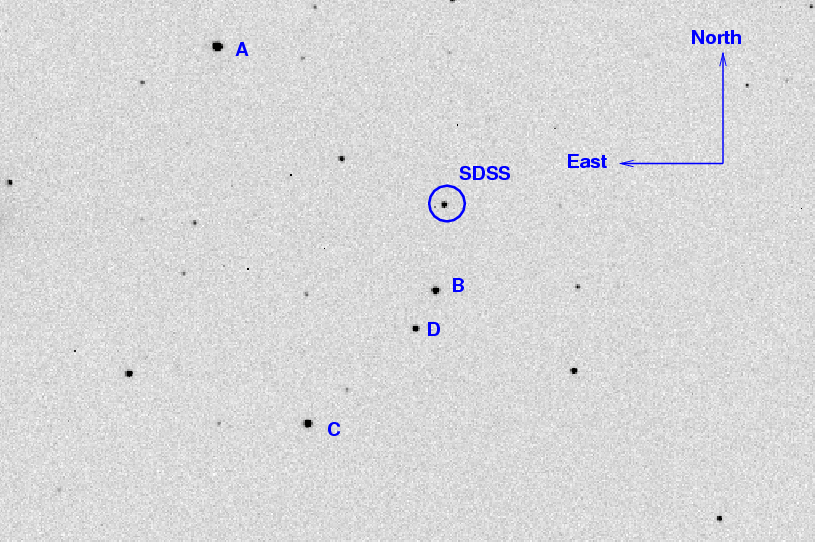
On the night of July 13/14, 2009, I observed the cataclysmic variable star SDSS150241+333424, which is currently in outburst.
The setup was:
Notes from the night
This is a chart of the field taken from UT Jul 10's unfiltered measurements.

The chart has several of the brighter stars in the field labelled with letters, just to keep me straight as I perform the reductions. Star A is in the Tycho-2 catalog, with measurements
my label RA Dec Bt Vt ---------------------------------------------------------------------------- A Tycho-2 2565-1118-1 15:03:02.00 +33:37:37 13.021 11.874 ----------------------------------------------------------------------------
Just to the east of this chart is the bright star HD 133431 = BD +34 2598 = HIP 73657, at V = 8.4.
I measured the instrumental magnitude of each star with aperture photometry, using a radius of 4 pixels = 5.6 arcseconds and sky defined by an annulus around each star. Following the procedures outlined by Kent Honeycutt's article on inhomogeneous ensemble photometry, I used all stars available in each image to define a reference frame, and measured each star against this frame.
One output of the ensemble solution is the value of the zero-point of each frame relative to the others. In the graph below, I plot this zero-point as a function of time. Note the big gaps and increases in extinction due to clouds.
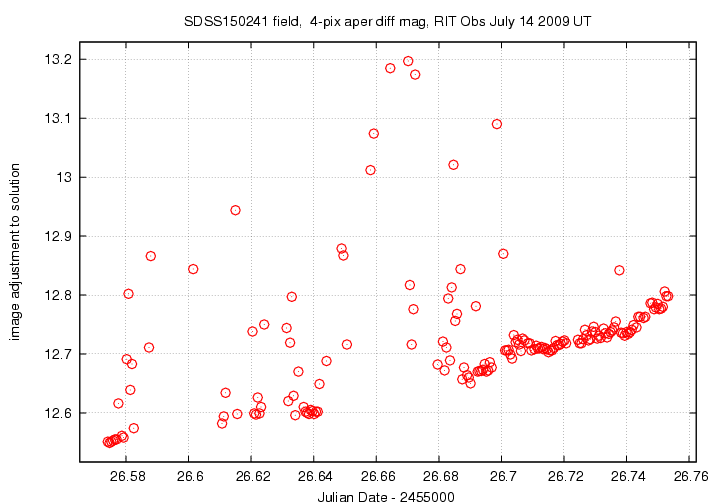
Below is a graph of the scatter in differential magnitude versus magnitude in the ensemble solution.
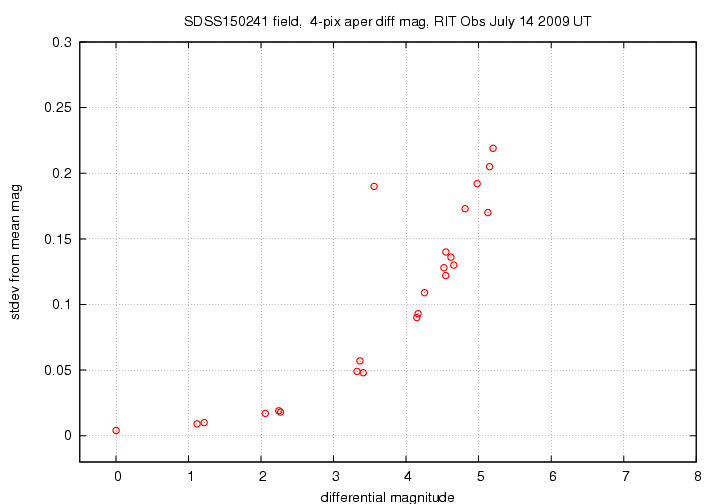
The floor of this diagram corresponds to a scatter of only about 0.007 mag, not very good. The target appears at differential magnitude 3.6; its scatter of 0.18 mag is due to the changes in its light.
Light curves for selected stars (SDSS150241 and stars A - D) in the field are shown below. The target is shown by light green crosses.

Here's a closeup of the variation in SDSS150241 and a few comparison stars.
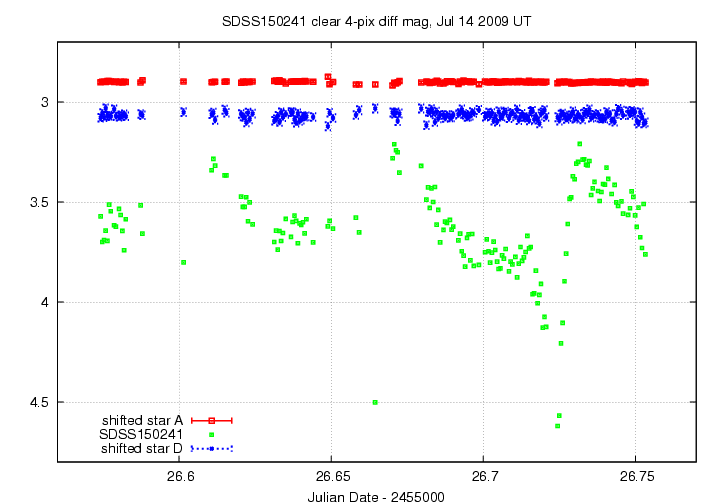
Just for fun, here's a comparison of the light curve of the star on all the nights I've observed it so far. I've shifted the measurements on the time axis by hand so that the minima roughly coincide. Note the change in shape of the light curve after the eclipse: early in the outburst, the light rises to a high peak, but as time goes on, that peak disappears.
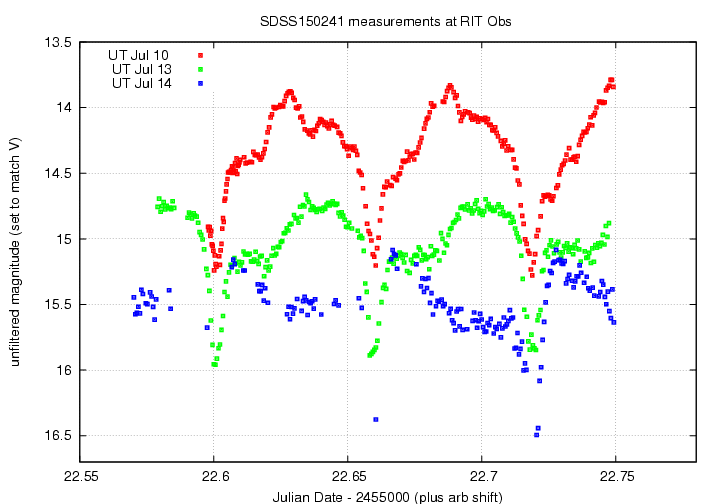
I've made a table of the measurements themselves, with three different flavors of time. The differential magnitudes from the ensemble solution have been shifted so that star "A" in my chart, Tycho-2 2565-1118-1, has value 11.874.
Here's the start of the table.
# Measurements of SDSS150241+333424 made at RIT Obs, Jul 14, 2009 UT, # by Michael Richmond, using 12-inch Meade LX-200 and SBIG ST-8E CCD. # Exposures 30 seconds long, no filter. # Tabulated times are midexposure (FITS header time - half exposure length) # and accurate only to +/- 1 second (??). # 'mag' is a differential magnitude based on ensemble photometry # using a circular aperture of radius 5.6 arcseconds. # which has been shifted so TYC 2565-1118-1 has Vt=11.874 # to match value from Tycho-2 catalogue. # # UT_day JD HJD mag uncert Jul14.07419 2455026.57419 2455026.57471 15.446 0.062 Jul14.07476 2455026.57476 2455026.57528 15.574 0.074 Jul14.07531 2455026.57531 2455026.57583 15.564 0.074
Last modified 7/14/2009 by MWR.